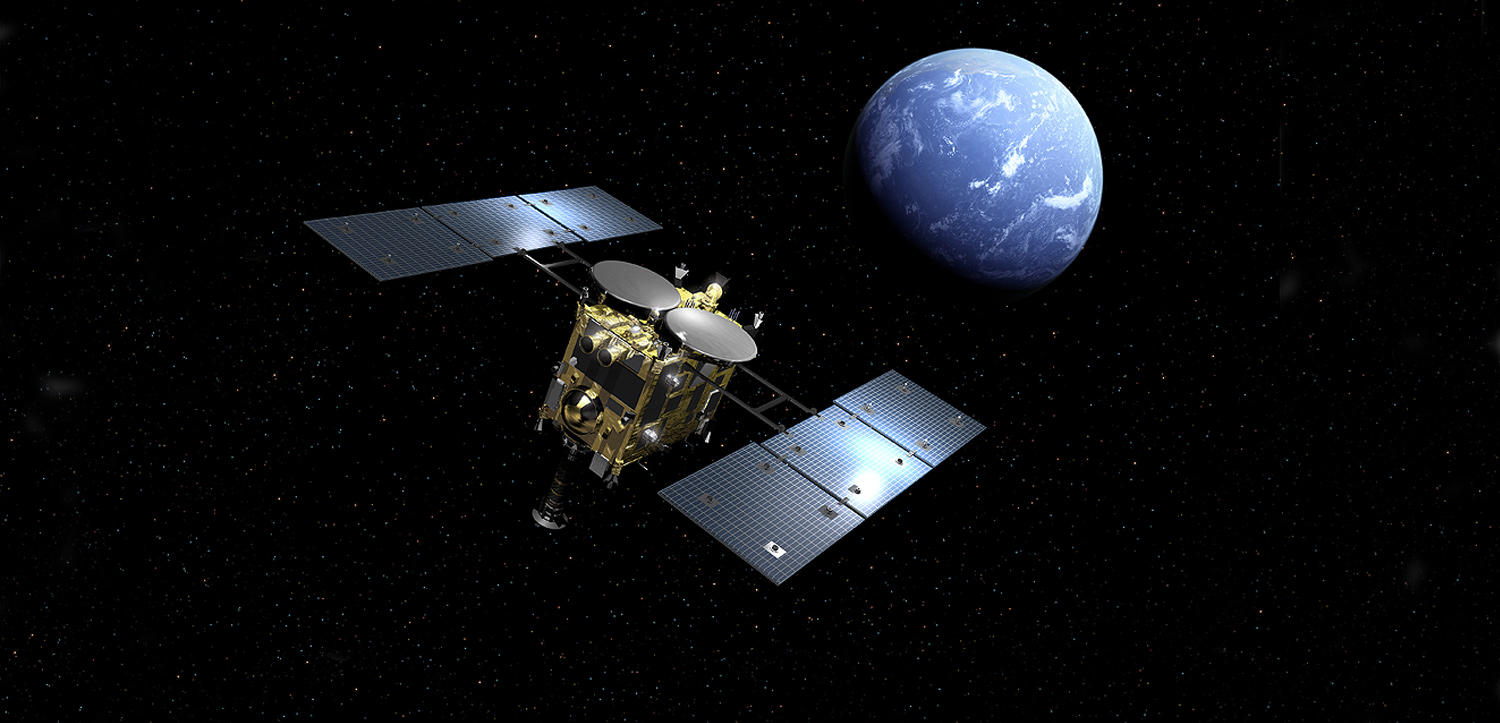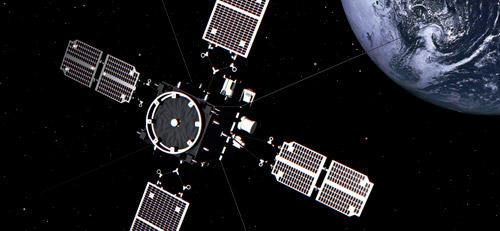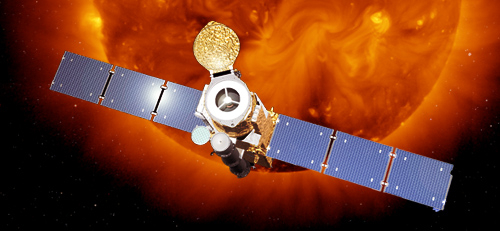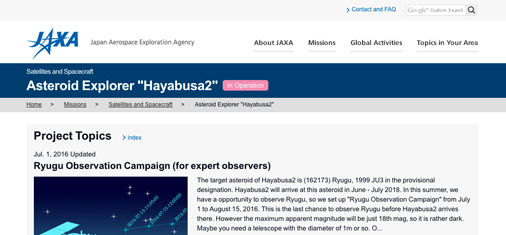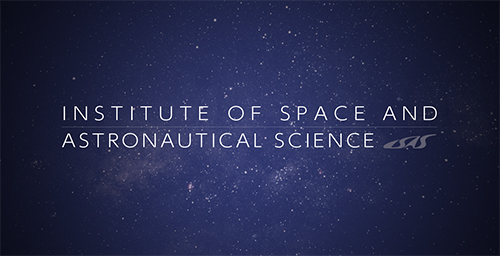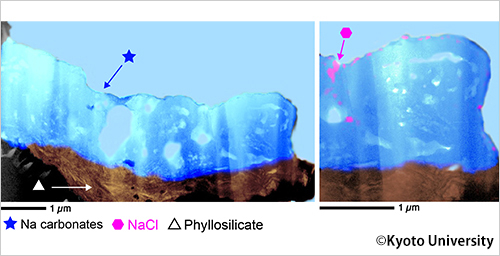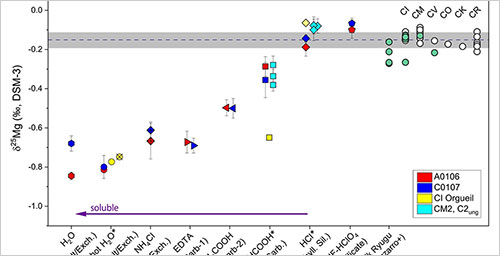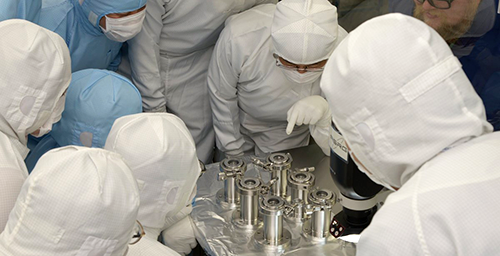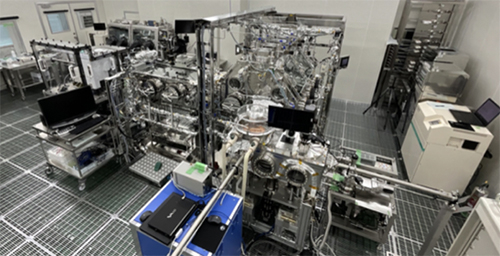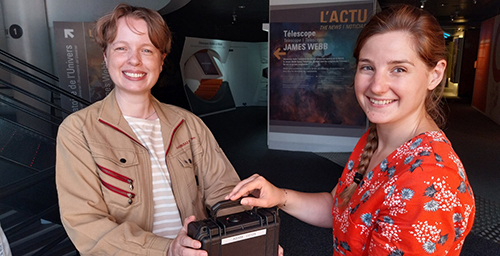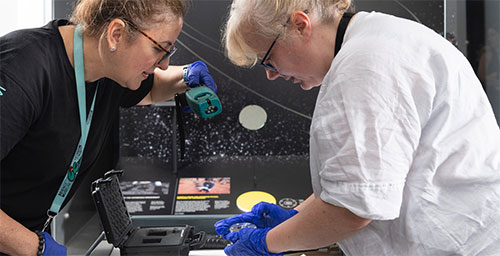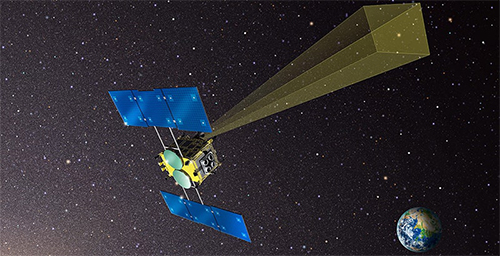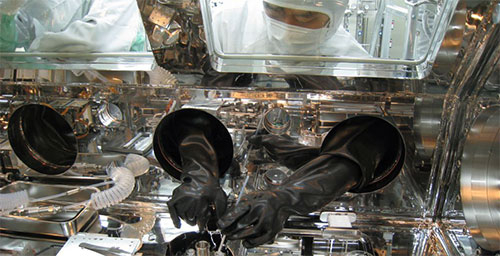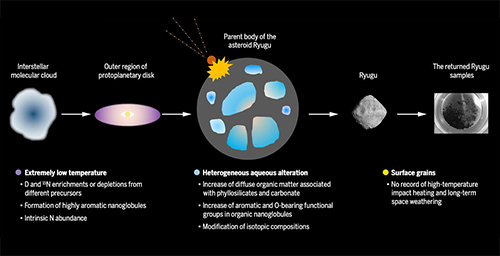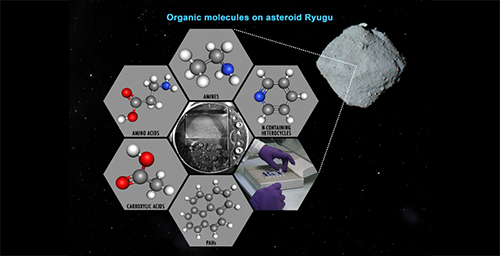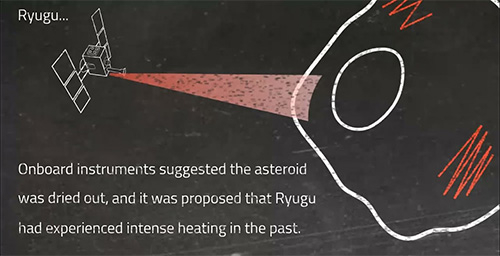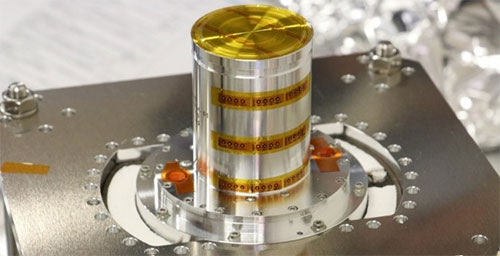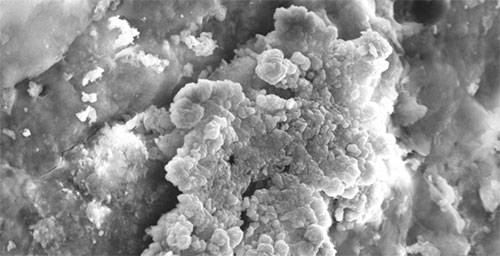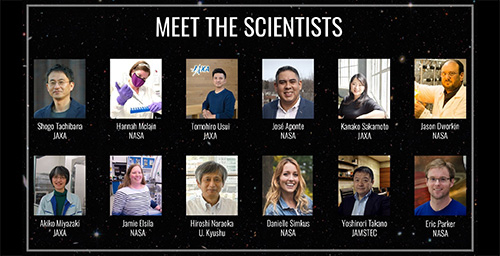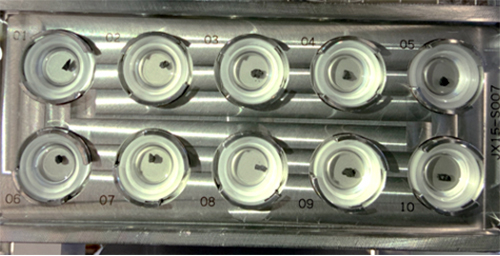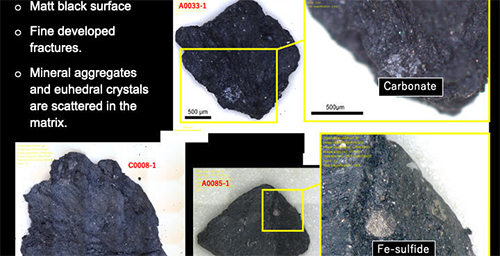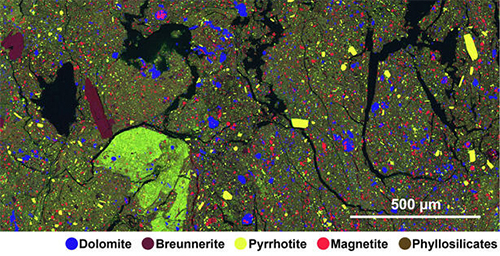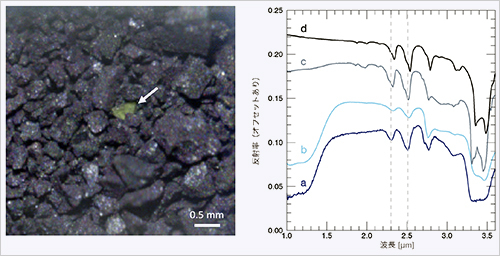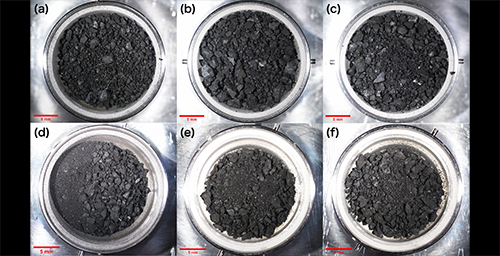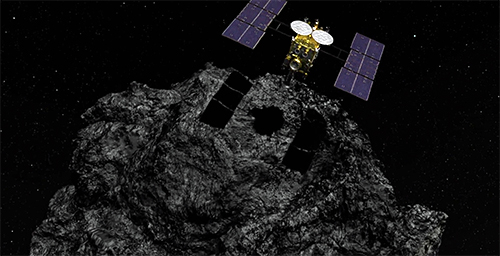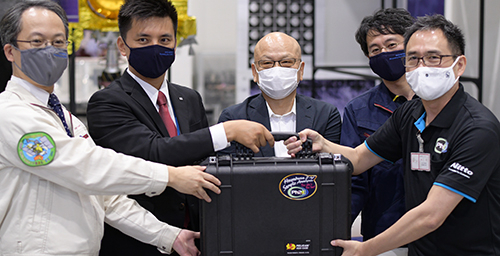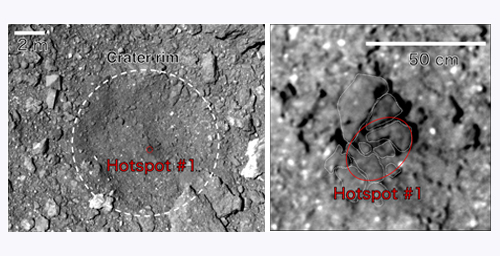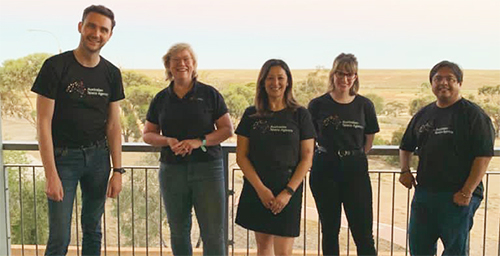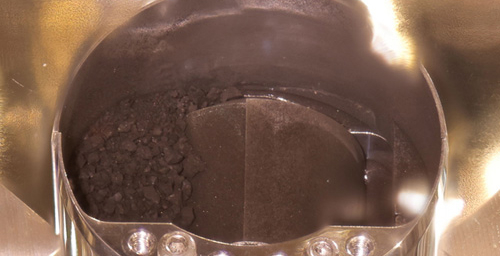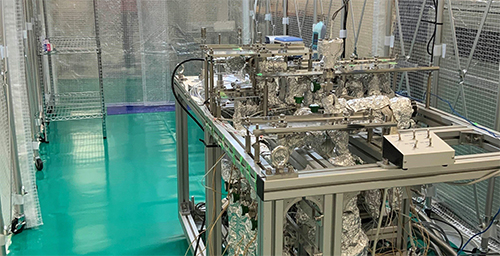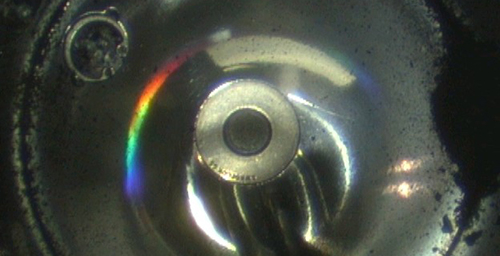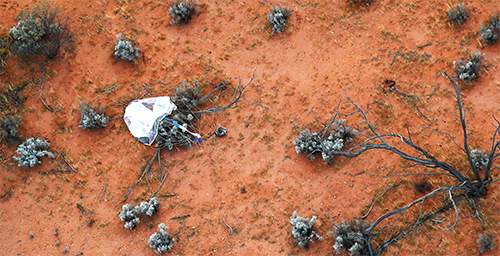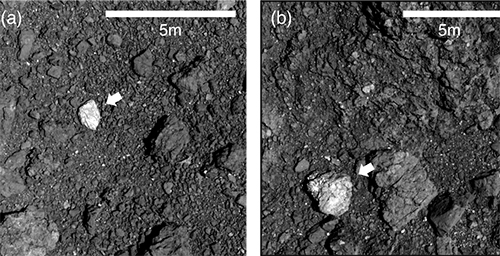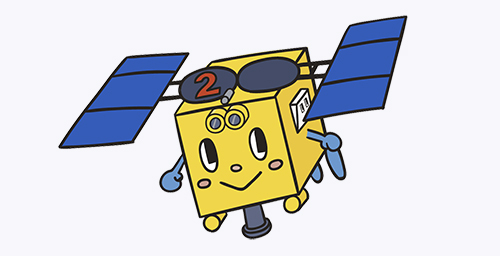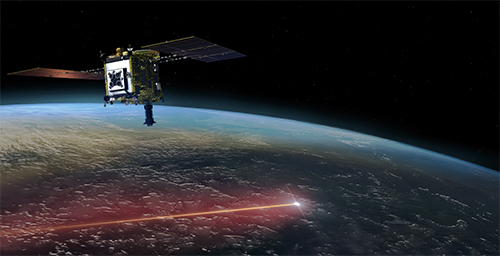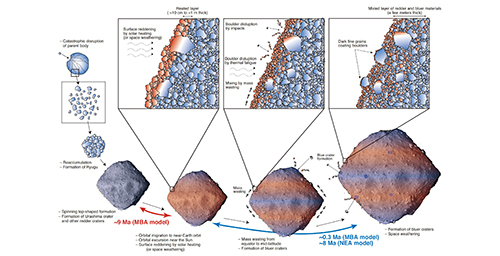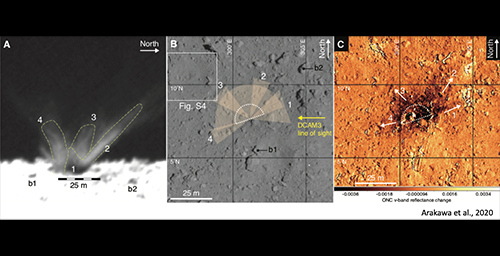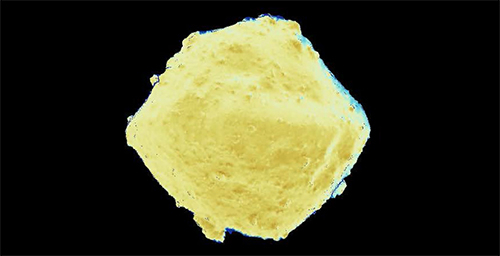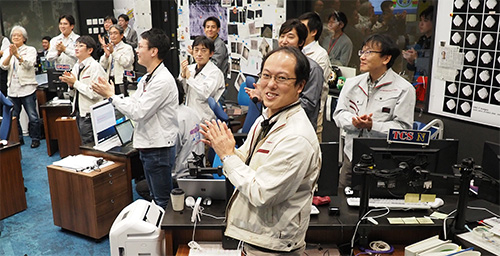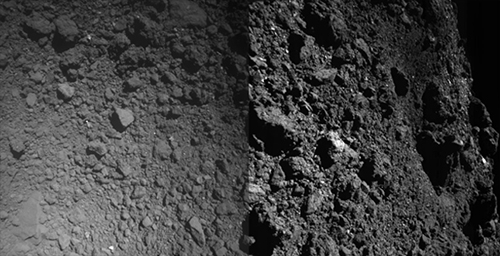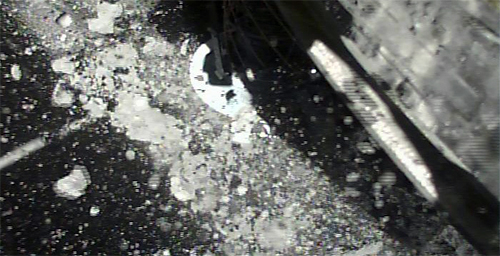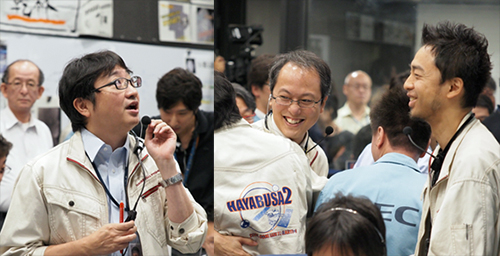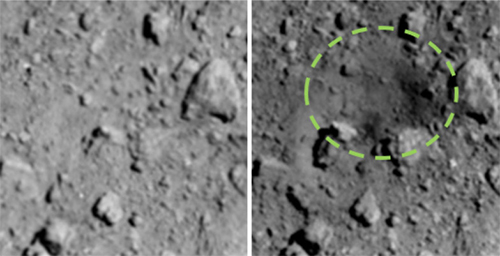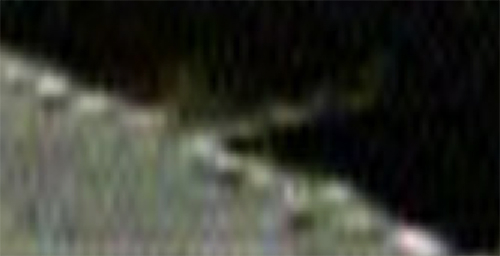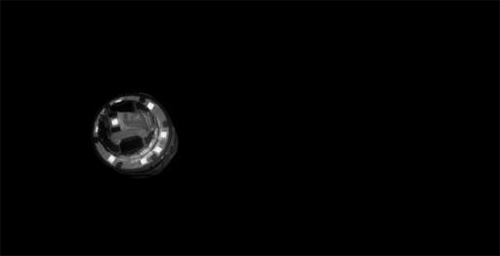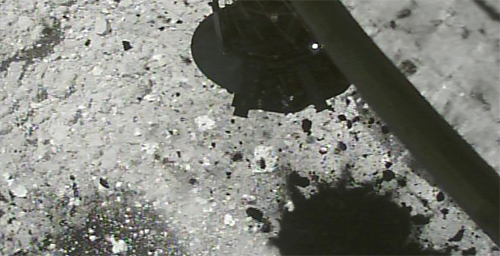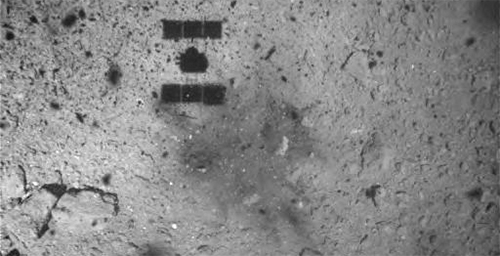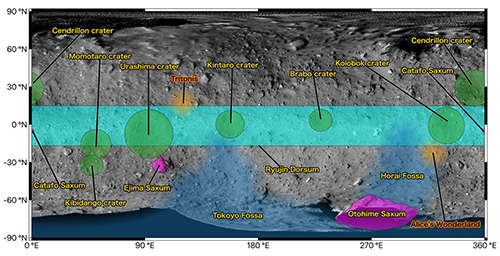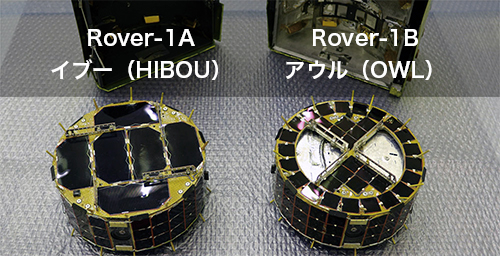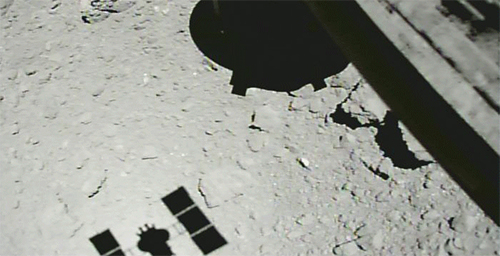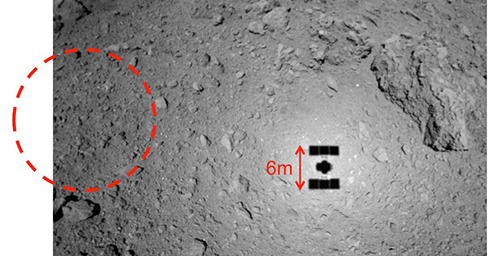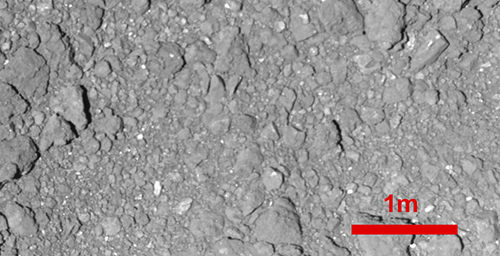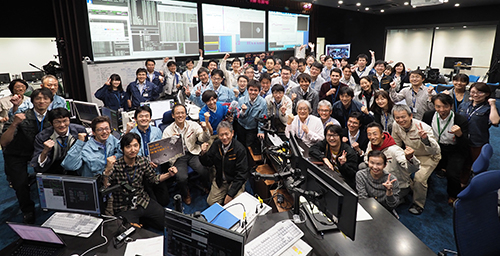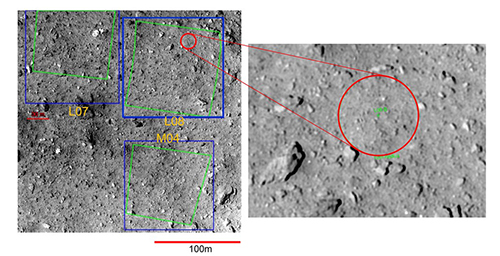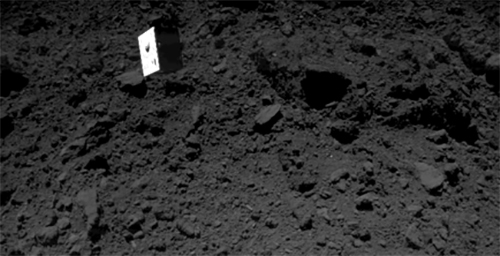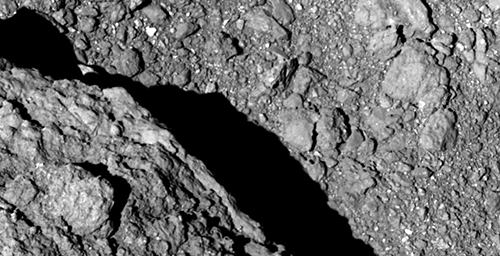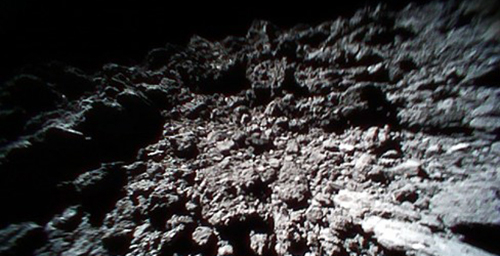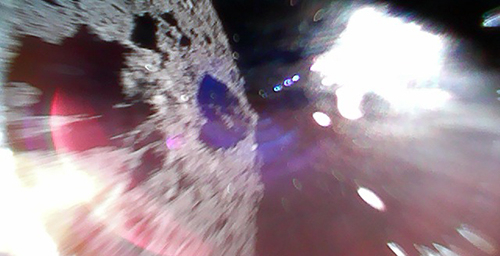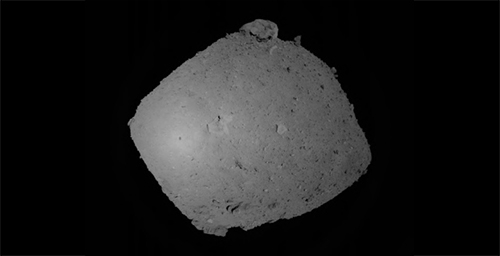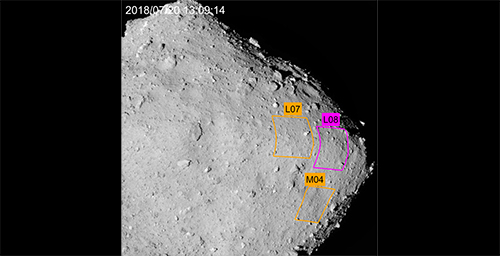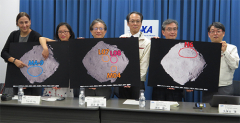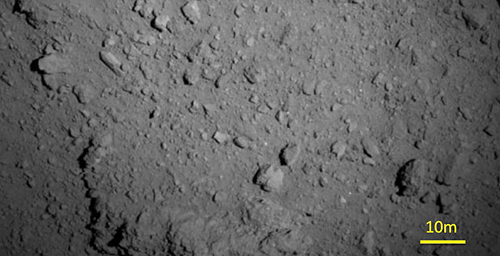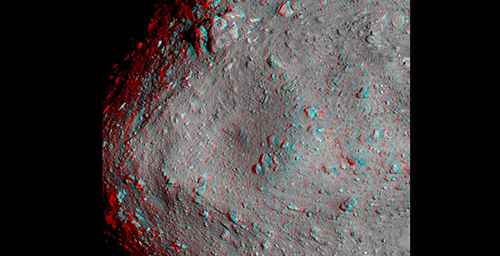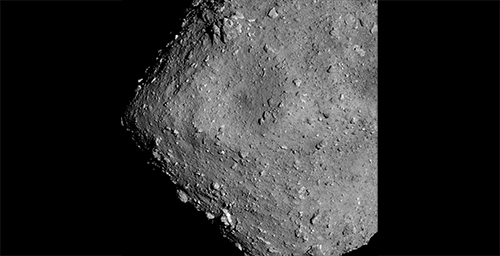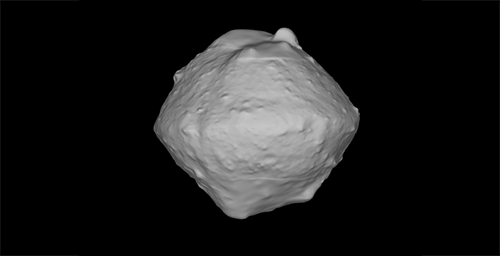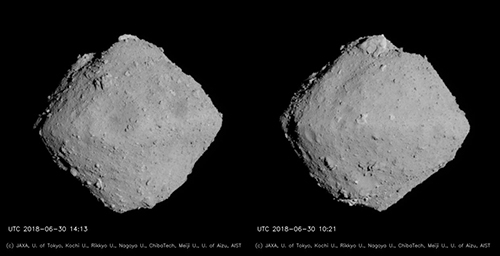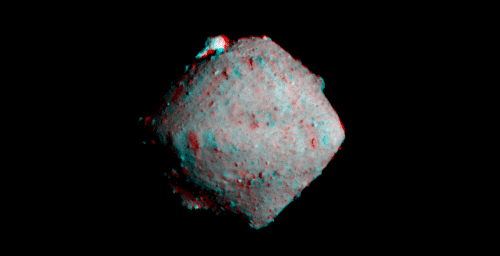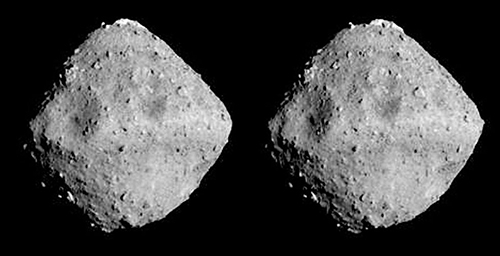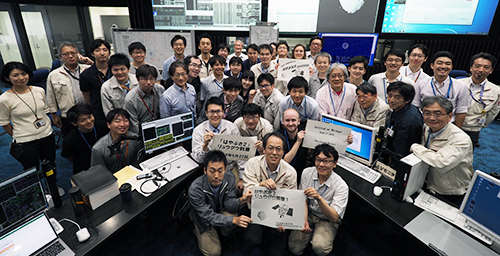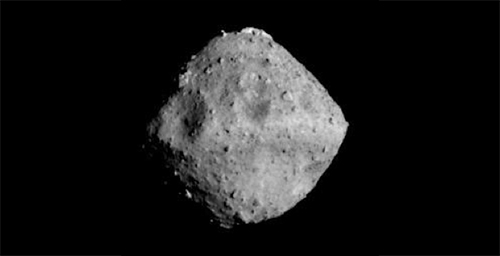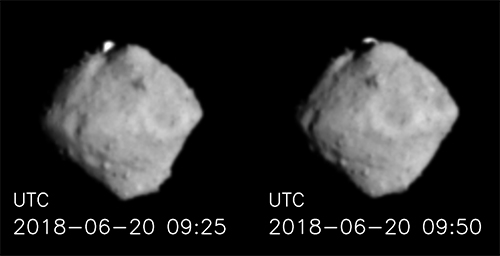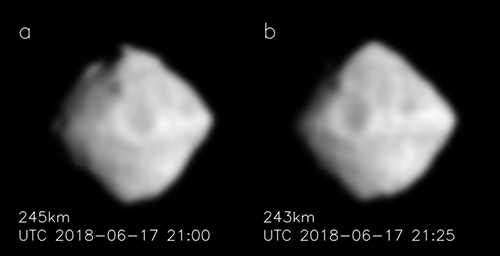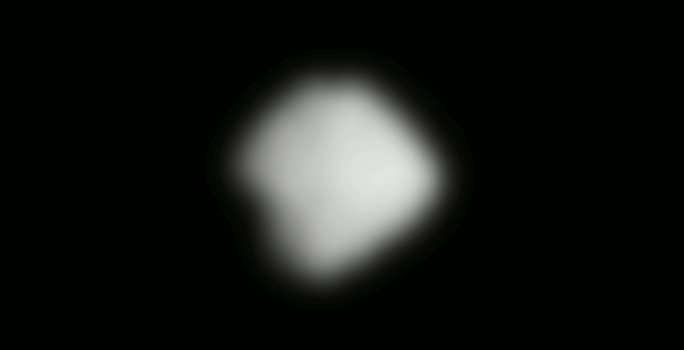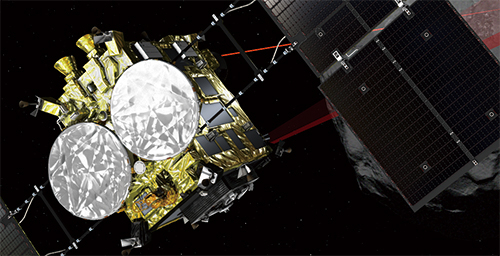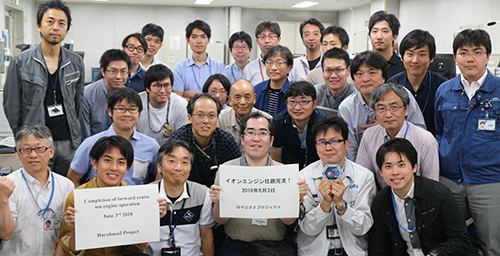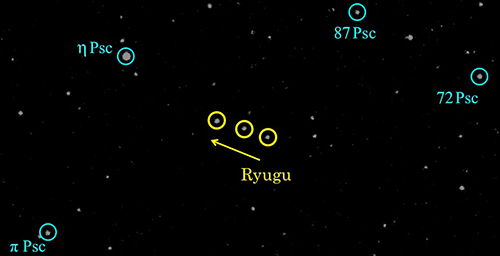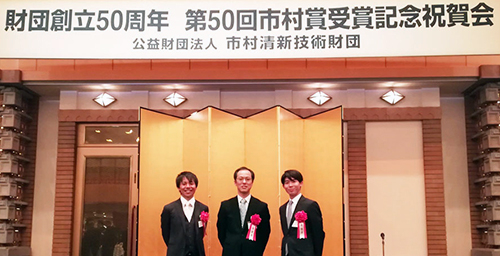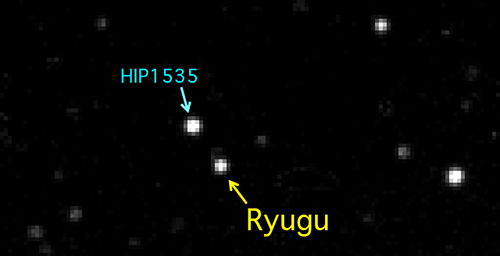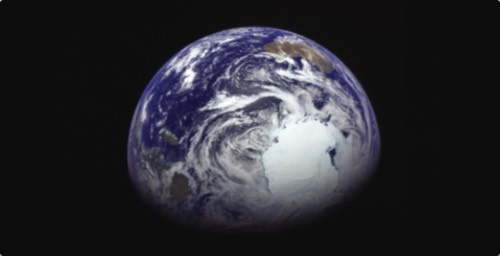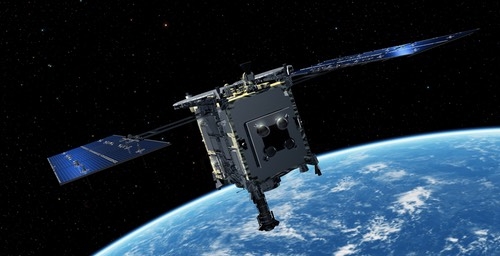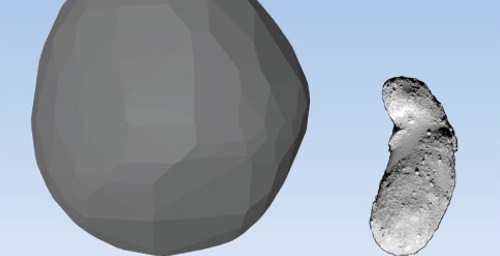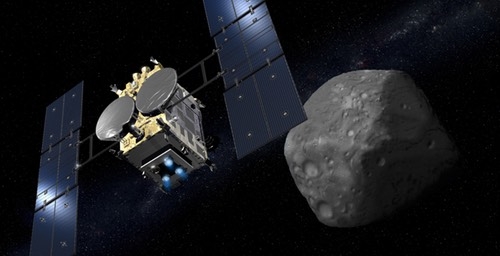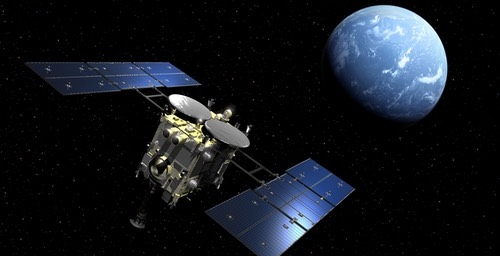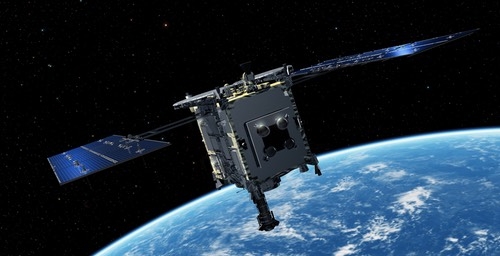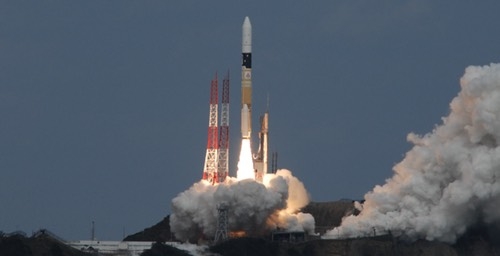This asteroid mission is the sequel to the Hayabusa spacecraft, designed for returning asteroid samples. By investigating a different type of asteroid (type C) from the Itokawa asteroid (type S) that was the target of Hayabusa, Hayabusa2 will explore not only the origins of the planets, but also the origin of the water of Earth’s oceans and the source of life.
Hayabusa2 primarily followed the sample return method performed by the first Hayabusa mission. However, a series of improvement were implemented to increase reliability so that the mission was able to obtain greater accuracy and reliability. The mission also took on additional challenges using new technology, such as that for creating an artificial crater on the asteroid surface and collecting a sample of the subsurface material. Improving spacecraft technology for exploring astronomical objects within the Solar System is an important goal for the Hayabusa2 mission.
Hayabusa2 examined asteroid (162173) Ryugu. Ryugu is a type C asteroid and it is believed that the composition of such asteroids still include organic matter and water from when the Solar System was forming, roughly 4.6 billion years ago. The second goal of the Hayabusa2 mission is to investigate questions regarding the origin of the Earth’s water and where the organic matter that forms life originally came from. Another aspect of the mission is to examine how the planets formed through the collision, destruction, and combination of planetesimals, which are thought to have been formed early in the Solar System. In short, Hayabusa2 is a mission designed to elucidate the creation of life and the birth of the Solar System.
Hayabusa2 arrived at Ryugu on June 27, 2018, collected samples from the asteroid during two touchdowns in 2019, and delivered the sample capsule back to the Earth on December 6, 2020. After delivering the capsule, the spacecraft continued on to a new mission. This new phase is referred to as the “Extended Mission”, with a new target destination of the small asteroid, 1998 KY26. This is a long-term mission whose duration exceeds 10 years over which there is an itinerary of events followed by the rendezvous with the rapidly rotating 1998 KY26.
The Extended Mission for Asteroid Explorer, Hayabusa2(“Hayabusa2♯”)
After returning to the Earth in December 2020, Hayabusa2 separated the sample capsule and left for a new journey into deep space. The Extended Mission will use the remaining ion engine fuel (Xenon), of which about half currently remains. The next target destination is asteroid 1998 KY26 and arrival is scheduled for 2031. During the journey, a flyby is planned of asteroid Torifune (2001 CC21) in 2026, and two Earth swing-bys in 2027 and 2028.
The final destination for the Extended Mission, 1998 KY26, is a very small object with a diameter of several tens of meters. The asteroid is part of a class referred to as fast rotating asteroids due to its extremely rapid rotation time of just 10 minutes. The “small and fast” attribute creates a very special physical environment near the asteroid’s surface, as the centrifugal force due to the rotation exceeds the gravity of the asteroid. How a target marker behaves when dropped in such an environment will be a scientifically interesting test. The characteristics of this type of celestial body have not been explored by humankind before, and the comparative observations with asteroid Ryugu are expected to deepen the scientific knowledge obtained at Ryugu.
Moreover, many asteroids of this size exist in outer space and are anticipated to collide with the Earth at a cadence of once every 100 to 1000 year, causing significant damage. However, ground-based observations are not able to reveal the details of these asteroids. Exploration with Hayabusa2 to establish both the physical characteristics of these asteroids and operation methods in the vicinity is expected to deepen knowledge about this asteroid class and provide us with useful information for designing countermeasures against an Earth collision.
The proximity flyby of asteroid Torifune (2001 CC21) scheduled for 2026 will be an additional technology demonstration that will contribute to Planetary Defense. To acquire meaningful science data with the camera onboard Hayabusa2, the spacecraft must approach as close as possible to the asteroid without a collision, and high orbit guidance accuracy relative to the asteroid is required. While optical navigation is essential due to the uncertainty in the asteroid’s orbit, asteroids are darker than planets such as the Earth and Venus, and can only be seen a few days before the flyby. The unique difficulties presented by the last minute navigation guidance for an asteroid mean that the flyby operation is similar to orbit-inducing technologies used to collide a spacecraft with an asteroid. Measures to change the orbit of an asteroid through collision with a spacecraft are being considered at a method of Planetary Defense to avoid a future Earth impact. The technology required for the flyby of Hayabusa2 can therefore directly contribute to the development of these measures.
As described above, the activities during the Hayabusa2 Extended Mission are expected to make notable contributions to Planetary Defense. This makes the significance of the mission enormous, and also explains why the challenges required for success are so diverse. For example, among the points to consider is how close the 2026 asteroid flyby can be, how the surface of the asteroid can be approached in regions where a target marker cannot be place, and what needs to be done during the ten year operation plan.
Fortunately, we still have plenty of time to plan these operations. Over this period, junior engineers who it is hoped will take on future active roles, are attempting to tackle the above mentioned interesting challenges together with colleagues who have experience in exploration. The Hayabusa2 Extended Mission is a valuable environment where both experienced and junior researchers can work together on the same issues and pass on their skills. This forms an important basis for developing the human component of exploration missions.
・Hayabusa2 Extended Mission nickname and logo
・Hayabusa2 A NEW CHALLENGE ― Extended mission ―(Video)
| Name | Hayabusa2 |
|---|---|
| Target body | Ryugu (C-type, Near Earth Object) |
| Launch Date | 3 December 2014 |
| Launch Location | Tanegashima Space Center |
| Launch Vehicle | H-IIA Launch Vehicle No.26 |
| Mass | Approx. 600kg |
| Orbit | Round trip between Earth and an asteroid |
| Arrival at Asteroid | 27 June 2018 |
| MINERVA-II 1 Deployment | 21 September 2018 |
| MASCOT Deployment | 3 October 2018 |
| 1st Touchdown | 22 February 2019 |
| Crater Formation by SCI | 5 April 2019 |
| 2nd Touchdown | 11 July 2019 |
| MINERVA-II 2 Deployment | 3 October 2019 |
| Departure from Asteroid | 13 November 2019 |
| Return to Earth | 6 December 2020 JST (Capsule landing) |
| Major onboard instruments | Sampler mechanism, Re-entry capsule, Laser ranging (LIDAR, light detection and ranging), Scientific mission equipment (near infrared and thermal infrared), Impactor, Rover (MINERVA-II) |
Links
- Twitter | @haya2e_jaxa
- Haya2NOW
- Printed Material | Hayabusa2 Project
- Ryugu Sample Database System
- Astromaterials Science Research Group (ASRG)
- Hayabusa2 1st Touchdown movie (CAM-H) | YouTube
- Hayabusa2 2nd Touchdown movie (CAM-H) | YouTube
- Extended mission | Hayabusa2 project
- Mission Movie | YouTube
- Hayabusa2 Earth Return | YouTube
- Hayabusa2 Operation | YouTube
- Mission Control Live | YouTube
- Press Briefing | YouTube
- Hayabusa2 Mission Digest 2018 | YouTube
- Hayabusa2 Remote Sensing Instruments | YouTube
- Hayabusa2: Arrival at Asteroid Ryugu (June 27, 2018) | YouTube
- Launch of Hayabusa2 Quick reviewed movie (2014/12) | YouTube
- Asteroid Explorer "Hayabusa2" Launch Live Broadcast (2014/12/3) | YouTube

